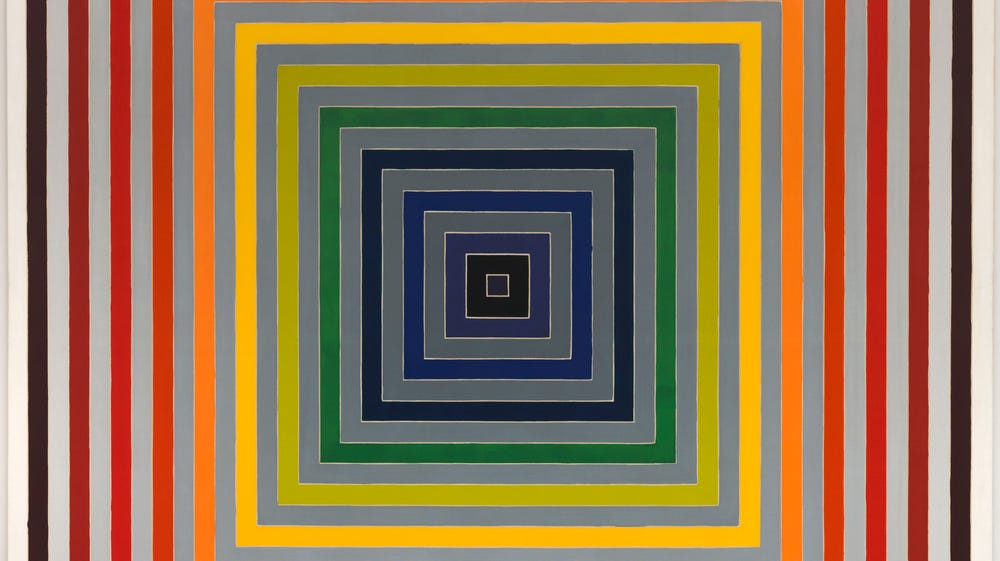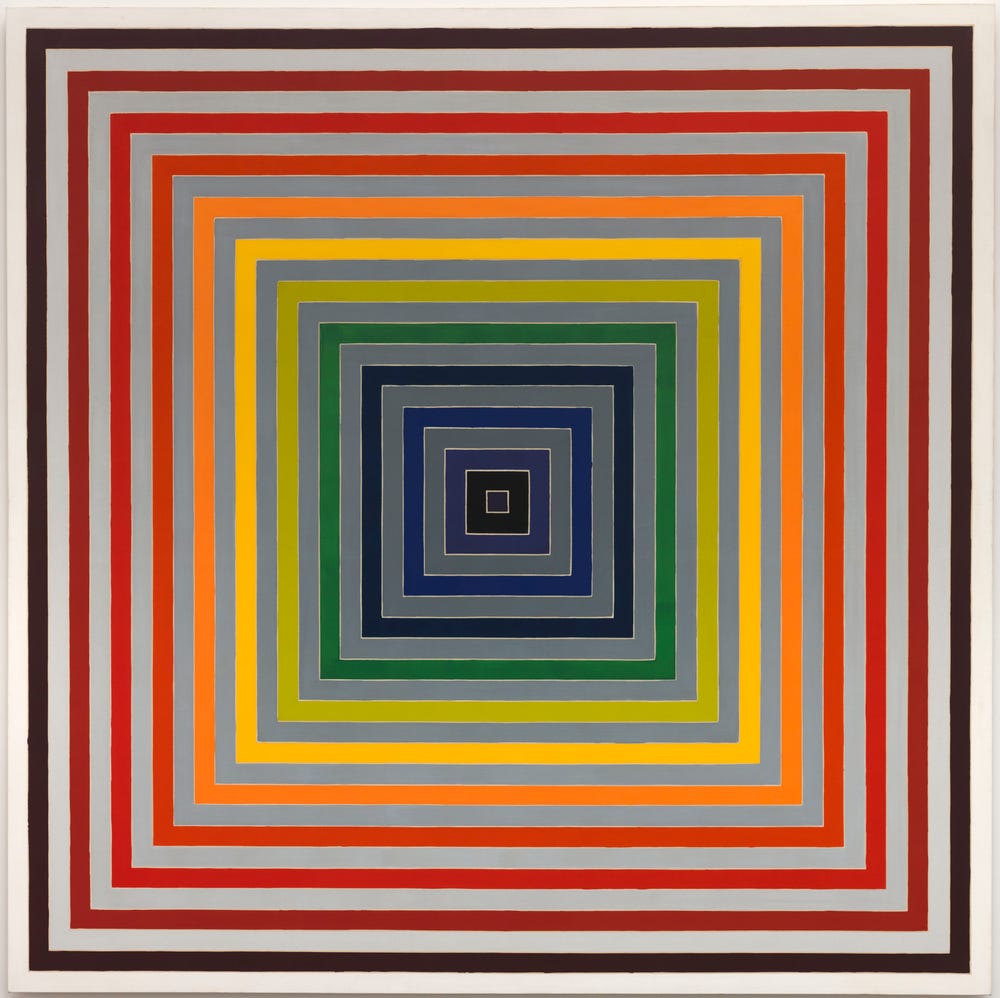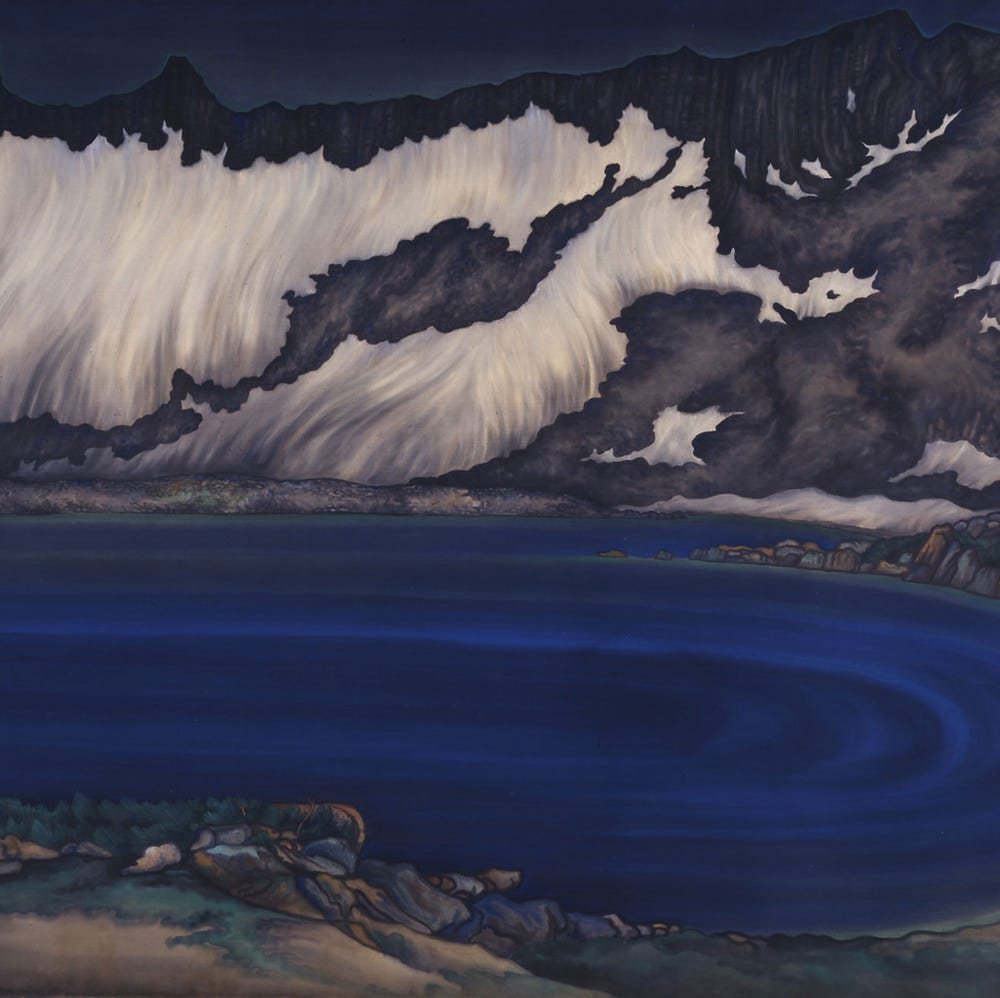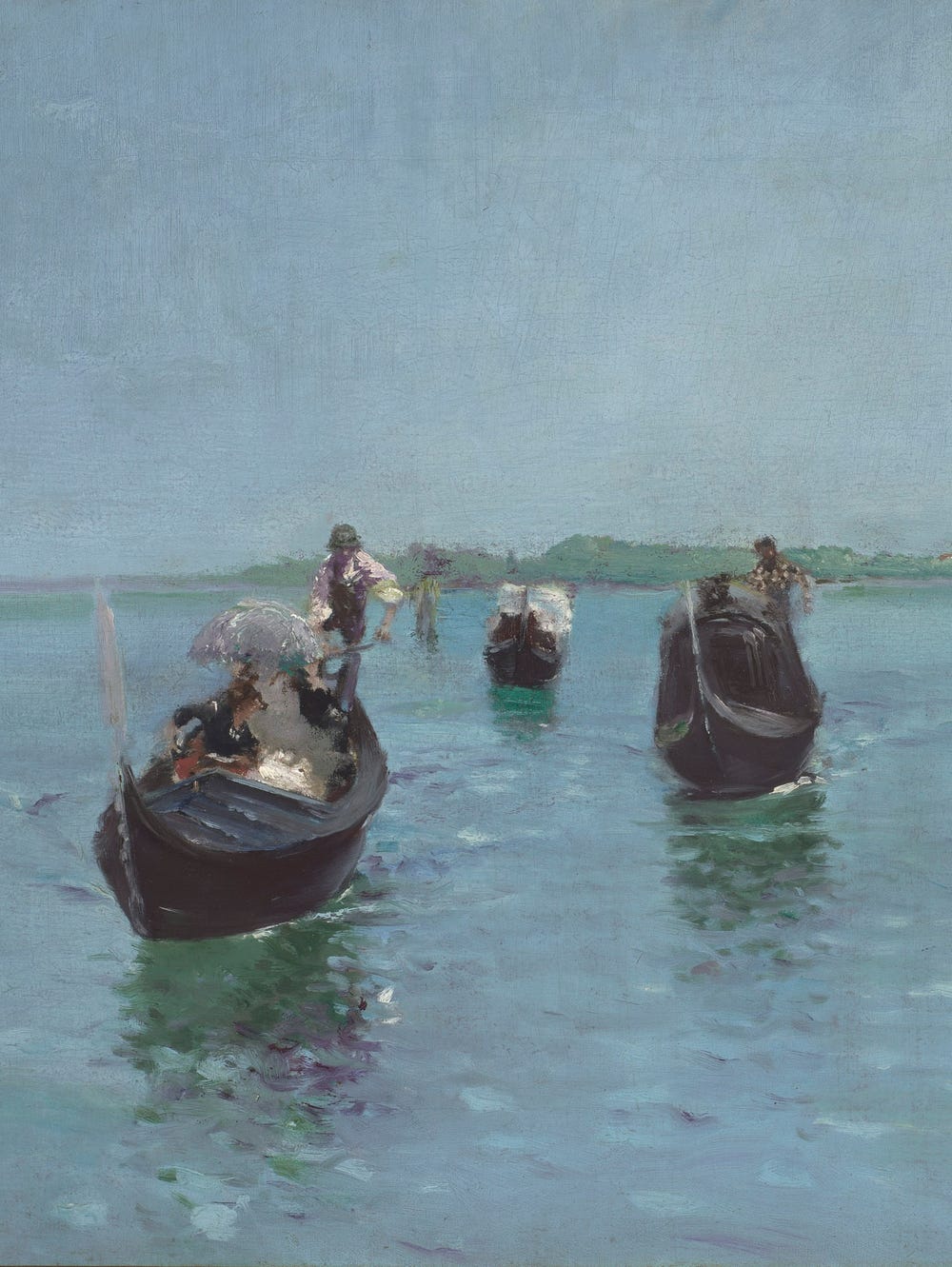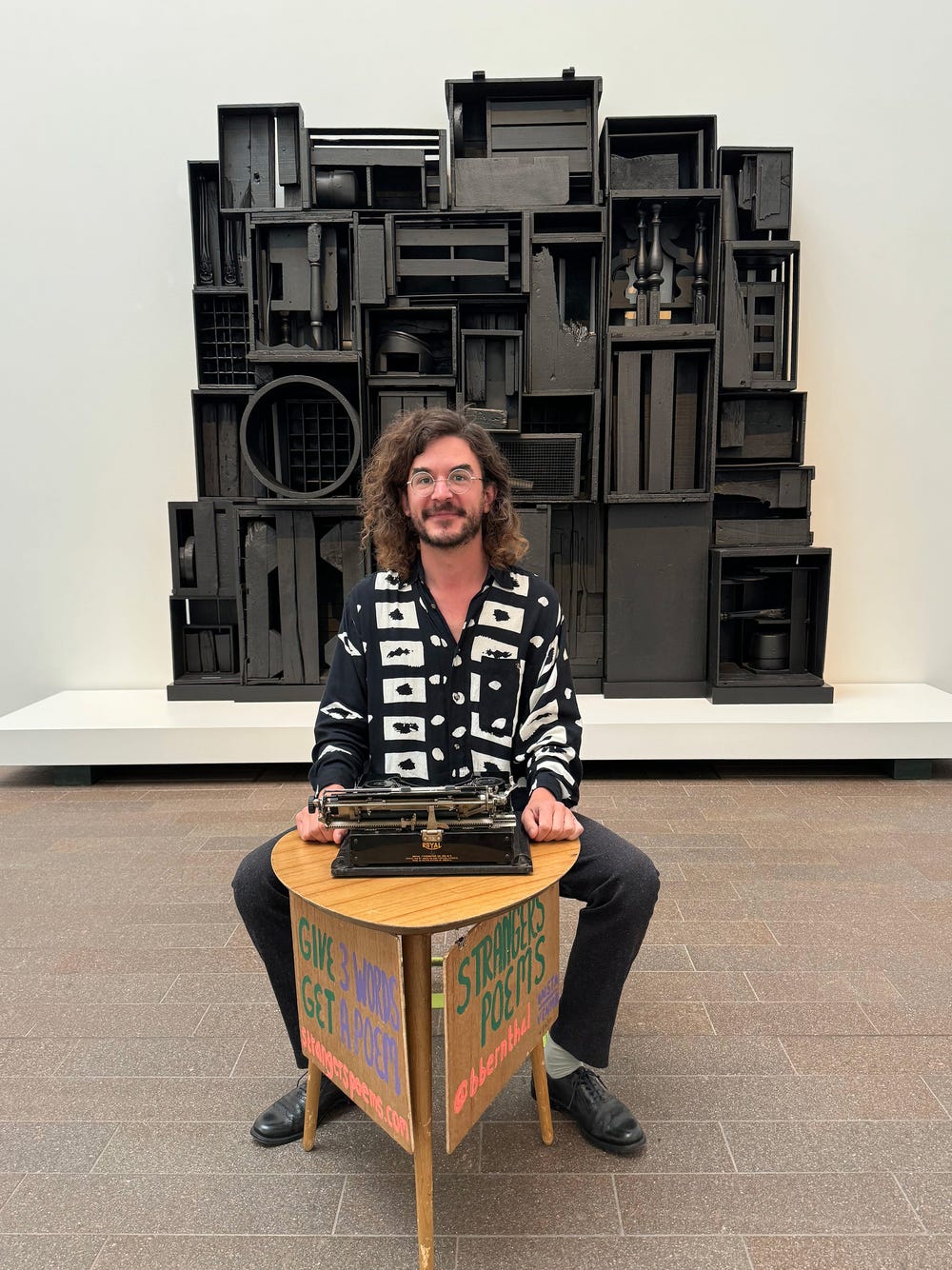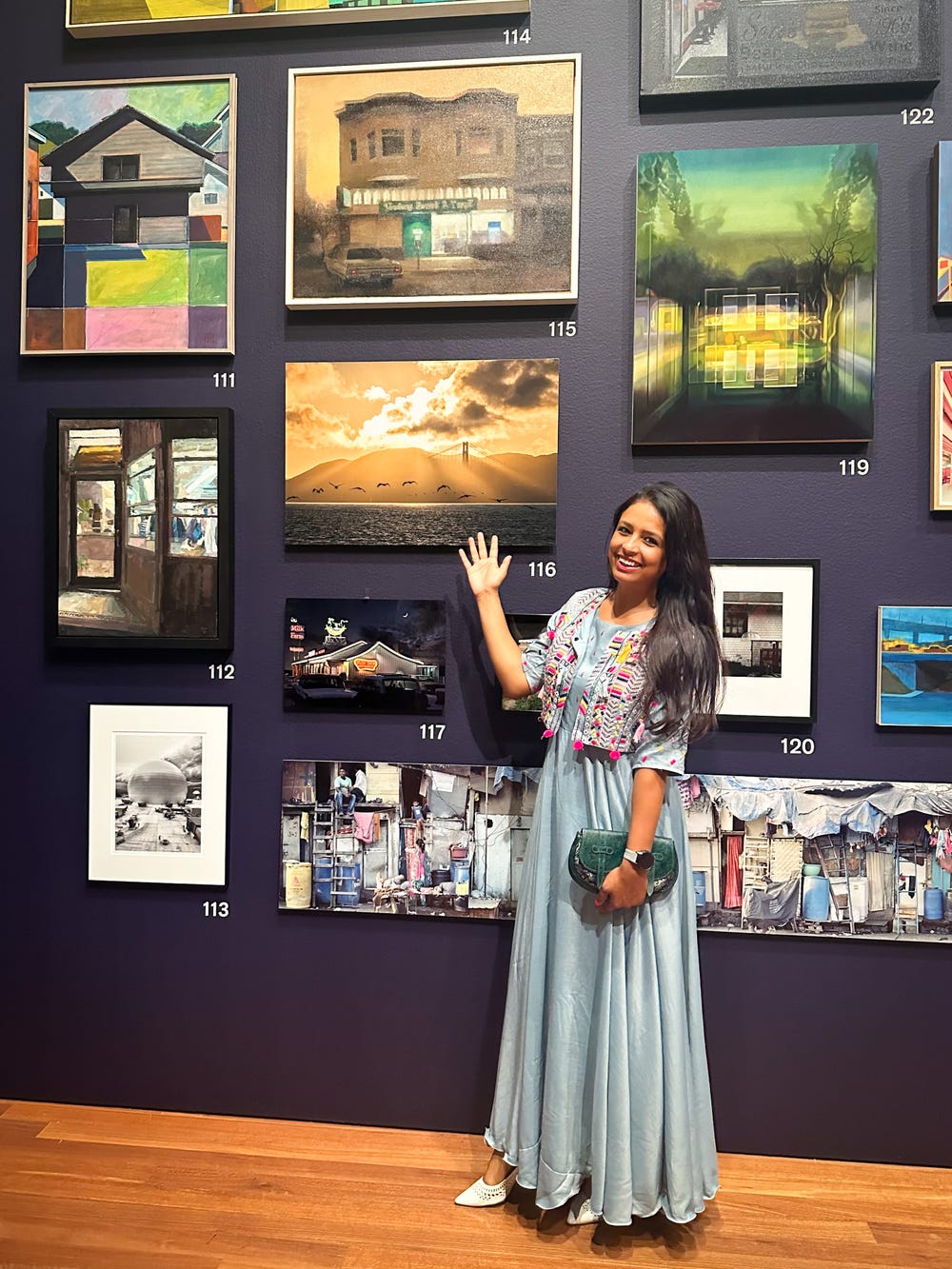Visitors to Gallery 14 at the de Young immediately encounter the riot of geometric color that is Frank Stella’s impressive 12-foot-square painting Lettre sur les aveugles II (1974). This vibrant work was the first of Stella’s paintings to enter the permanent collection of the Fine Arts Museums of San Francisco.
Frank Stella (American, b. 1936). Lettre sur les aveugles II, 1974. Synthetic polymer paint on canvas. Museum Purchase, Phyllis C. Wattis Fund for Major Accessions. 2013.1
Frank Stella was born in 1936 in Malden, Massachusetts, and attended preparatory school at Phillips Andover Academy, where he studied art with Patrick Morgan. At Princeton University he majored in art history and, although there was no formal studio art degree, the young artist was mentored by painter Stephen Greene and art historian William Seitz.
As a student, Stella visited New York City often, where he frequented museums and galleries, admiring works by Abstract Expressionists such as Ad Reinhardt, Mark Rothko, Barnett Newman, and Morris Louis, all of whom emphasized the two-dimensional surfaces of their works.
In 1959 at the age of 23 Frank Stella burst onto the New York art scene as a fully formed artist when his now-legendary “black paintings” were included in the Sixteen Americans exhibition at the Museum of Modern Art. The black paintings—symmetrical compositions comprised exclusively of parallel bands of black paint separated by thin pinstripes of unpainted canvas—transformed the very definition of art. Devoid of illusionistic space or pictorial allusions, these works boldly demonstrated Stella’s assertion that a painting was “a flat surface with paint on it—nothing more.”
In the black paintings, Stella also developed the foundations for what would become his signature stripes, which are seen in Lettre sur les aveugles. The almost standardized width of these bands or stripes is based on the width of the 2 ¾-inch brush that he used to create the black paintings, and continued to use in subsequent works. Through these trademark bands or stripes, Stella sought to resolve the conflict he perceived among Abstract Expressionists who wanted to draw images, and yet also paint spontaneously without drawing.
The enormous painting is one of the largest works from the Stella’s aptly named Concentric Square series, which he began in 1962. The scale of this work transforms it from a mere painting into an enveloping and experiential color field.
The work’s title, Lettre sur les aveugles II, refers to a famous essay by the French philosopher Denis Diderot (1713–1784), who is often considered the first modern art critic. The essay, “Lettre sur les aveugles à l’usage de ceux qui voient” (“Letter on the Blind for the Use of Those Who See,” 1749), was prompted in part by recent medical advancements that enabled doctors to restore vision to some patients who had been blind since birth. These operations inspired great speculation on the nature of vision, a subject that aligned with Stella’s conceptual and perceptual interests.
Although the Museums hold many other works by Stella in the Achenbach Foundation for Graphic Arts, this is the first painting by the artist to enter the collection. It is currently installed in Gallery 14 at the de Young, where it complements Minimalist sculptures by Carl Andre and Sol LeWitt.
